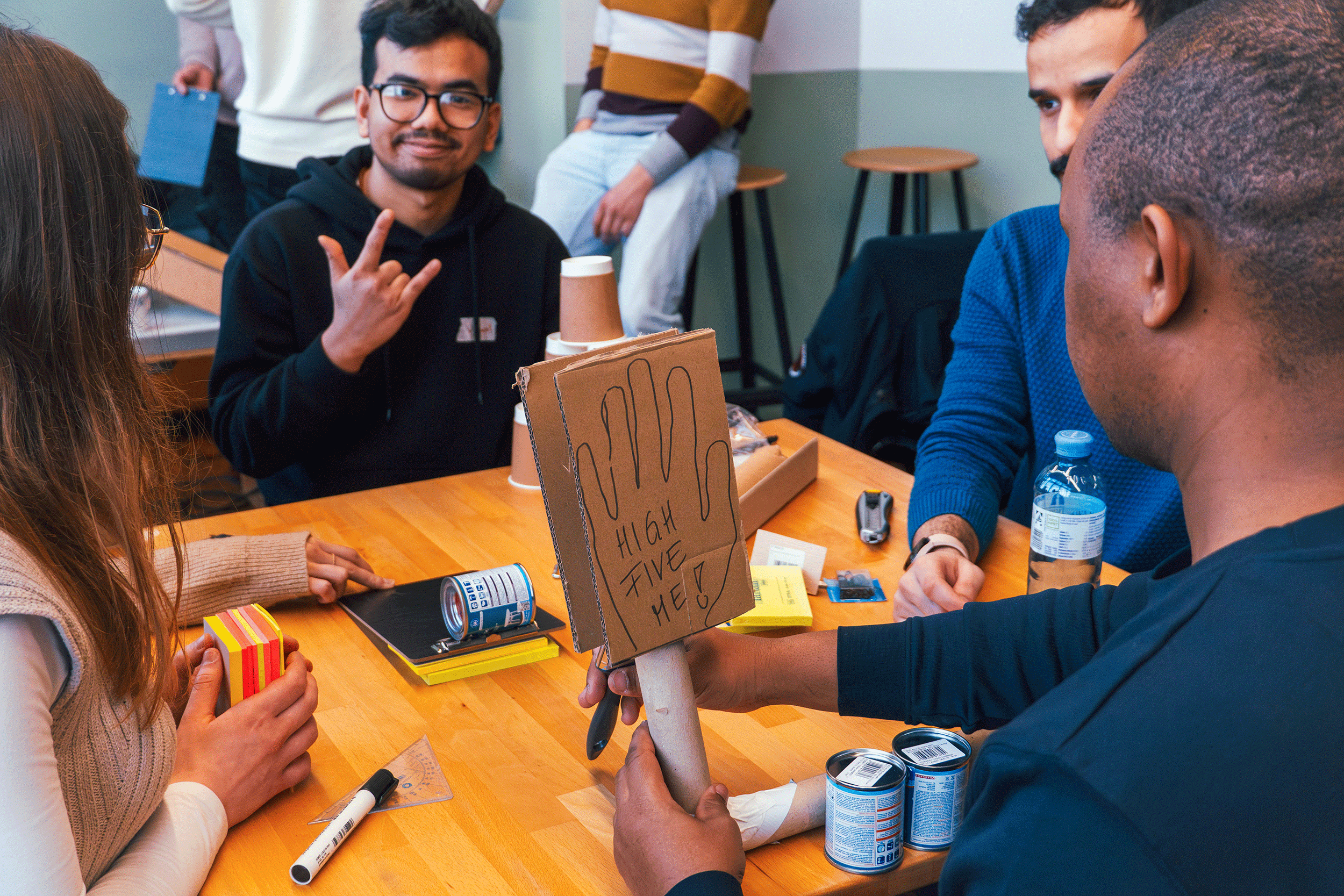HAMK students have a unique learning experience in Germany

For the third year in a row, HAMK students are tackling the business challenges of breakthrough technology companies from the “Silicon Valley of Europe”.
Practical cooperation with working life is part of everyday life for universities of applied sciences, but it can take many different forms. One of the most significant examples of business cooperation is currently taking place in Germany, between HAMK and the German university Design Factory.
A three-month project is in its final stages, in which nine HAMK students and six students from the German Design Factory, inno.space Mannheim, are working in teams to create solutions to challenges faced by three international companies. The students were selected for the project through interviews, among other things. The students represent different educational backgrounds and are all international students from HAMK – this time there were only a few Finns among the applicants. The students are from HAMK’s English-language Constuction Engineering, Computer Applications, Mechanical Engineering and ICT Circular Economy programmes.
The research and development projects involved, H-Cube, Hylight and Megamorph, aim to develop breakthrough technologies: one focusing on graphene displays and two on hyperspectral imaging. They are funded by the European Commission’s ATTRACT project, which aims to strengthen the European innovation ecosystem, the “Silicon Valley of Europe”.
Breakthrough technologies are future technologies that seem far out of reach but are expected to become normalised in the near future. They will also have a major impact on people’s daily lives and a strong emphasis on solving problems in a more sustainable way.
H-Cube aims to create a hyperspectral camera that operates at room temperature in the challenging sub terahertz (THz) range. The aim is to expand the range of imaging applications from expensive low-volume applications, such as large body scanners in airports or research applications, to everyday applications. These could include crop monitoring, surveillance of buildings and identification of weapons in crowds.
Hylight, for its part, is developing a hyperspectral imaging device that classifies embryos based on their metabolic profile. This would be revolutionary for fertility treatments, where identifying the most suitable embryo is a critical step.
Megamorph is developing large reflective screens using environmentally friendly graphene. In graphene panels, pixels can tune sunlight to reflect natural colours. These displays have a higher pixel density because colours are reproduced in only one pixel, instead of the normal three.
The more vague the idea, the better
In such a high-tech world, where technologies are very complex, what can students contribute?
The famous thinking outside the box, says Jali Närhi, project manager at HAMK.
“Even though these technologies are already very advanced, the challenge for the student teams is to find alternative, even crazy ideas for what the current technology ideas could be used for in the future,” says Närhi.
The more vaguer the idea, the better – the more vague the idea, the better, the wisdom in the start-up world goes. Companies have already thought about where to take the current idea, but they don’t necessarily have the resources to think about other uses.
“Students have a fresh mentality to think about it. On the one hand, they can find 100 directions not to go. That’s important information for companies too.”
From the students’ point of view, the most important thing is of course learning. Most are facing such a task for the first time, and the project is meant to be a journey, providing an enabling safety net for students to find different directions that can succeed or fail. One of the most important lessons is not to fall in love with your own ideas. They will be severely tested along the way, and the end result may be the realisation that the idea has already been invented or has weaknesses.
Students have a fresh mentality to think about it. On the other hand, they can find 100 directions not to go.
Jali Närhi, project manager, HAMK Design Factory
The course also introduces students to design thinking. In design thinking, it is essential to look for a problem that is worth solving. This is achieved by understanding the user, creating a persona and user experience after background research and questionnaires, and only then starting to think about the challenge to be solved.
Once the challenge has been identified, the actual brainstorming to solve it begins. The solution is prototyped and tested. The process is then repeated as many times as possible.
“This has been a challenge for many students. They are used to being given a task to complete as perfectly as possible and then given a mark. Design thinking is an iterative (iterative) process, with a lot of uncertainty at the beginning and therefore perfection is not something you can strive for,” says Närhi.
EU funding with a big budget
The project is demanding but rewarding for the students. The students have a budget of up to €240 000 at their disposal. The funding comes from the EU’s Horizon Framework Programme. The budget covers travel to the various events during the course, trips to the company’s premises in different countries (in this case Italy and Spain), prototyping costs and equipment purchases. To pass the course, students are also required to submit a research paper of at least 5,000 words, a couple of posters illustrating the idea, a video, a speech and photographs of the solution.
The project will culminate in a final gala on 19 June at the HAMK Design Factory. The German students and colleagues will then travel to Hämeenlinna for about a week.
Based on experience from previous years, Närhi says that the biggest “ahaa” experiences are usually experienced in that last week.
“The students have loved these implementations. The feeling has even been euphoric.”